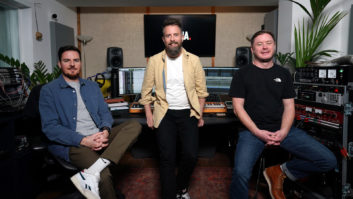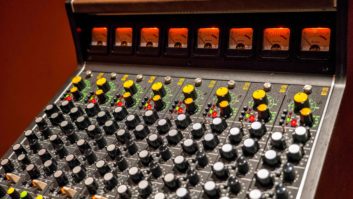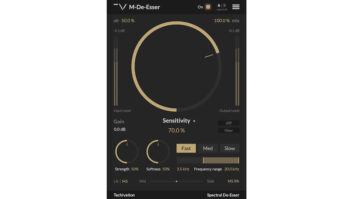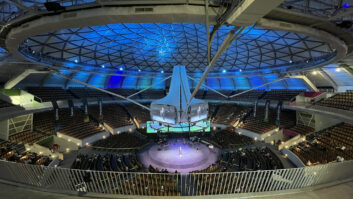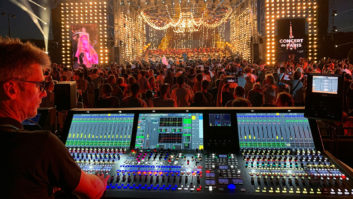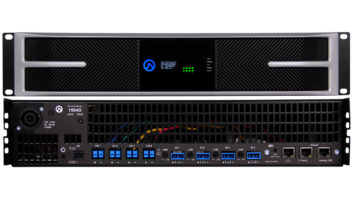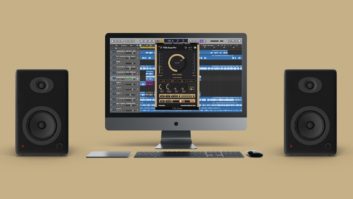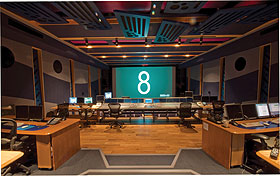
I think that at some point every young aspiring sound engineer dreams of being involved with film. All those loud explosions, fantastic string arrangements, fast edits and, most of all, ginormous mixing desks. So when I moved to London as a student in the early 1990s, I walked past De Lane Lea dreaming of working on the next Bond movie.
One of London’s top post-production facilities, De Lane Lea was founded in the late 1940s by a French intelligence attaché for the British government, Major De Lane Lea. Initially established to dub English films into French, the studio quickly expanded in the ’60s and ’70s. Technical growth and development in radio and television secured more work in the advertising sector, and there was expansion into music, too, with many of the giants—Pink Floyd, The Beatles and Queen, to name a few—recording here, as well. (Fans should note that these sessions took place at De Lane Lea’s former Wembley and Kingsway sites.)
Today it’s easy to miss the six-room studio’s entrance, located unobtrusively in the heart of London’s SoHo district. Once you’ve signed in and been led to the bar area, it opens up into a warren of offices, corridors and rooms. The walls are lined with posters of well-known films and signed photos of actors most of us are used to seeing 30 feet tall on the big screen. Suzanne Facenfield, scheduling manager and energetic ray of sunshine, greeted me and made me feel like part of the family in an instant; I then sat down to chat with general manager Mike King and their two first-call mixers, Chris Burdon and Doug Cooper.
CATASTROPHE BECOMES OPPORTUNITY
Work on Fantastic Mr. Fox was well under way in the summer of 2009 when De Lane Lea’s neighboring building caught fire and the resulting smoke and water damage forced a temporary relocation of most of the operations. So what did the DLL crew do? They decided this was the perfect time to rebuild, upgrade and install a brand-new speaker system. The studios that benefited the most from the rebuild are 1, 2 and 3, according to the principals. They had started to feel a tad tired, so it was the perfect time to spruce things up. The rooms now feel airy and pleasant, with an instant feel of comfort; the “I can do some great work in here” factor is extremely high.
Most of this positive vibe should be credited to the close collaboration between Meyer Sound, Munro Acoustics and ace consultant Dennis Leonard. New acoustic treatments dealt with the slightly uneven bass response of the original Studio 1. This meant increasing the bass reverberation slightly and evening out that end of the spectrum, resulting in a bigger and fatter sound. New diffusers were installed to help glue the surrounds together. It doesn’t matter where you sit in the room, you’ll always get a good sonic perspective. With the choice of monitoring system, it became clear that the De Lane Lea team is not afraid of making bold decisions and staying ahead of the curve. Meyer Sound is not usually thought of in film sound monitoring, but the company has obviously made a first-class foray into the industry. I couldn’t help but be excited to hear the rooms, having experienced Meyers several times in a front-of-house capacity and marveling at the system’s power, even sound and clarity. Plus, the Skywalker folks love them—need we say more?!

Studio 2 has a 24-fader AMS Neve Gemini and 7.1 Meyer EXP monitoring.
Meyer Sound is not usually thought of in film sound monitoring, but the company has obviously made a first-class foray into the industry. I couldn’t help but be excited to hear the rooms, having experienced Meyers several times in a front-of-house capacity and marveling at the system’s power, even sound and clarity. Plus, the Skywalker folks love them—need we say more?!
The Meyer Sound EXP monitoring systems in the three studios include Acheron 80s, Acheron LFs, Acheron Studios, HMS-10 full-range two-way loudspeakers for the surrounds, X-800 subwoofers, the Galileo loudspeaker-management system and SIM3, Meyer’s Source Independent Measurement system. Although the choice to switch to Meyer for post was unprecedented in the UK, King and all at De Lane Lea were convinced it was the right one to make. Translation to other environments has not been an issue, and the new acoustics in combination with the Meyers has resulted in a livelier and more natural sound. This is being confirmed daily by clients, directors and mixers alike.
TOOLS OF THE TRADE
At the heart of each room is an AMS-Neve DFC Gemini console, with Studio 1 housing the largest of the three fitted with a very cool Soundmaster Ion Virpad. De Lane Lea runs on Pro Tools, which allows for the DFCs to be supplemented with sidecar Avid D-Commands if required. This uniform configuration makes it extremely easy to move projects from room to room; a project stays in the same format and will be laid out on the same consoles, which means better budget management as a client moves from smaller room to massive dub stage.
All the rooms are equipped with at least one Lexicon 960L and a TC System 6000, which again emphasizes the studio interchangeability. At the time of my visit, Harry Potter 7 was in Studio 1 making use of five 960Ls!
Sitting in Studio 3 and chatting with mixers Chris Burdon and Doug Cooper, whose credits include X-Men First Class, Gnomeo & Juliet, Scott Pilgrim vs. the World, KickAss, 10,000 B.C., Children of Men and United 93, among countless others, it becomes immediately clear that De Lane Lea will do anything to accommodate clients.
For example, the crew has gone old-school in an effort to make mixing easier, faster and more compatible with the other mix rooms. They’ve been using MIDI program changes for automation and switching within the effects processors. As all the automation data is stored within the DAW’s MIDI section, you can simply cut all of the MIDI along with the picture and all automation is locked.
Cooper also explained that the studio sometimes gets so busy that he has to disappear into the preview theater with a small Pro Tools rig and an MC Mix so as not to interrupt his workflow. Incidentally, this 37-seat theater is also going to get the De Lane Lea makeover, allowing for these impromptu sessions to take place more often.
I’m a music engineer, so my visit to De Lane Lea was a fascinating insight into the world of senior-league, Hollywood-style post-production. In challenging times for their industry, the De Lane Lea team’s willingness to adapt, along with its top-flight facilities, flexibility and outstanding client care, look set to keep them at the forefront of UK post-production for many years to come.
Video on De Lane Lea’s Bringing In a Meyer Sound System
Untitled from De Lane Lea on Vimeo.
De Lane Lea’s Work on Harry Potter and the Deathly Hallows, Part 2
SoundWorks Collection: The Sound of Harry Potter and the Deathly Hallows – Part 2 from Michael Coleman on Vimeo.
